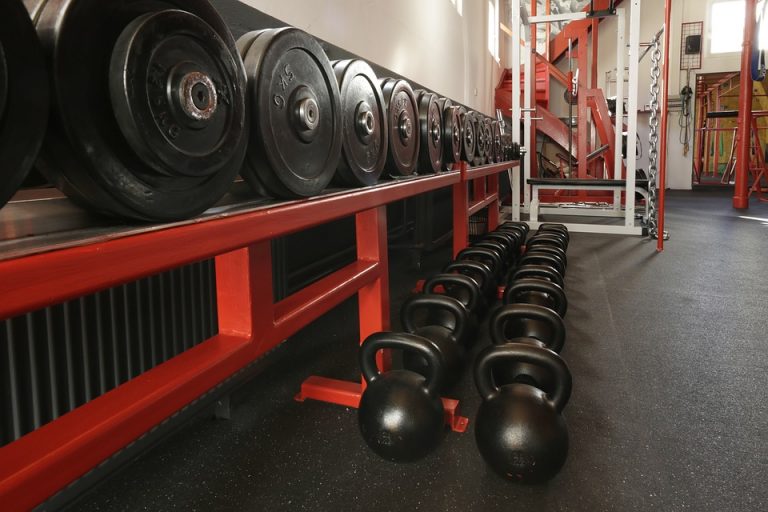Most people looking for a training plan focus their attention on stimulating muscle hypertrophy that is building muscles. Stimulating the development of muscle strength is less popular, and the quest for a training plan is much less common. But sometimes there is a moment of reflection, where people who pay attention to the appearance of their figure, also want to work on the muscle strength, which sometimes is in poor shape.
Strength training differs slightly from muscle-based training, and its specificity is to stimulate the nervous system by using lower repeat ranges and increased training frequency of basic combat. This means that training of the same muscle group usually takes place at least 3 times a week. Due to repeated stimulation, the nervous system is adapted to include more motor units during exercise, which is indicated by the increase in strength.
What training system should you choose?
Most people are based on the classic FBW method with 5x5 training. The training plan is to make 3 workouts focused on developing strength during the week. We focus mainly on multiples for basic combat, i.e., squats, squeezing, lying and dead lifting on a stick or rowing. This means that the training is based on a maximum of 4-5 exercises, taking into account the complementary ones, which are designed to train the shoulders.
Typical strength training is usually recommended to experienced people who know the basics well enough to be able to perform them forcefully. As well as knowledge about their capabilities, they provide some tips on how to plan your progress accordingly. However, the FBW 5x5 is not a complicated enough scheme for even a mid-level person to cope with their performance, and as it turns out, progression estimates also do not require expert knowledge.
Planning progression
Implementing an effective plan requires us to know the load that we are able to use in each training battle. The basis is to know the maximum load that we are able to make 5 repetitions in squat, dead lifting while lying down, or rowing. In addition, let's also check our strength for pulling ups or military press. Supplementary exercises are performed on standard hypertrophic ranges.
With the knowledge of what weight we are capable of making 5 repetitions with, we need to choose the training load in such a way that from week to week we raise the load in series until we reach our proven max. This is the key for the progression of the load to continue until further loading is no longer possible. If there is a moment of stagnation we should either make a descent from the next week or two, or simply break the schedule and change the training system for a period of time.
In case we are not able to make a set number of 5 repetitions in a series, we should not proceed with progression and perform constant workout training that we have to break. Descent below 5 repetitions in the series threatens to lack of progression training due to excessive stimulation of the nervous system.
Example of a series exercise
This is an exaggerated progression of the series for squat, whose maximum 5 repetitions we are able to perform with a load of 100kg. The progression should look like this:
1 series of 50-60kg x5 repetitions
2 series of 60-70kg x5 repetitions
3 series of 70-80kg x5 repetitions
4 series of 90kg x5 repetitions
5 series of 100kg x5 repetitions
As we can see, progression is planned to raise the load every 15%. It is an optimal growth that will effectively stimulate the nervous system, and importantly, smooth increase will prepare the movement apparatus for exercise as well as soft tissue. If the series 5 is made without much difficulty, we add around 2.5kg to the next workout.
Beginners who make the plan for the first time may take advantage of some of the underestimated values that will appear as follows:
1 series of 50-60kg x5 repetitions
2 series of 60-70kg x5 repetitions
3 series of 70-80kg x5 repetitions
4 series 80-85kg x5 repetitions
5 series of 90-95kg x5 repetitions
How to construct a training plan?
The core of FBW 5x5 training is 3 exercises. The basic version of training involves performing only sit-ups, dead ends, pulling on the bar and squeezing the barbell. The plan is presented as follows:
Monday
5 × 5 squats
5 × 5 Barbell Bench Press
Pullups on a bar 5 × 5 (or rowing 5 × 5)
Wednesday
5 × 5 bed
Military press 5 × 5 (or push press 5 × 5)
Deadlift 5x5
Friday
5 × 5 squats
5 × 5
Pullups on a bar 5 × 5 (or rowing 5 × 5)
The above training plan is a simple scheme that is designed to stimulate the growth of major muscle groups during basic exercise. Even if you want to expand your plan, you should use the minimum base version early in the system to see how the body reacts to the scheme. This will give us time to make sure that the pace of regeneration is appropriate and progressive.
After a period of 2-3 weeks, when we check that everything is ok, the training plan can be supplemented with rigorous exercises aimed at shoulder development. We should then watch the strengths closely as well as our regeneration or deterioration. Perhaps the basic version is enough to optimize the nervous system to build strength.
Small muscle group training is presented as follows:
Monday
Squat 5 × 5
Barbell Bench Press 5 × 5
Pullups on a bar 5 × 5 (or rowing 5 × 5)
5 × 5 dumbbell bench press
Wednesday
Squat 5 × 5
Military press 5 × 5 (or push press 5 × 5)
5x5 deadlift
Close Grip Bench Press 5 × 5
Friday
Squat 5 × 5
Barbell Bench Press 5 × 5
Pullups on a bar 5 × 5 (or rowing 5 × 5)
French press 5 × 5
Tips
Watch out for the right technique - Strength training should focus, as much as possible, on the performance of the exercise. This is extremely important because the loads applied much faster can contribute to injury and overload. If we have doubts as to whether our training technique is correct, we should consult our efforts with an experienced person.
Remember to warm up - strength training without proper warm-up does not exist. Remember that you will train strength, the repetition ranges that will be used in the plan are not conducive to maintaining a good working temperature, so between the series make basic movements, bends or stretches to maintain physical activity, especially as intervals between series can be up to 5 minutes. Before training, use treadmills, cross trainers or bikes to maximize body temperature. Do not forget about the elements of dynamic warm-up in the form of stretching.
Proper regeneration - regeneration is not just a rest from the gym. We can also regenerate actively by using light aerobic forms such as swimming in the pool, cycling or walking. Massages and all forms of wellness are welcome.
Insurance - is an important element of strength training. As far as possible, train in a place that will allow you to safely reject the load or use security features such as a rack. It is also a good idea to get the help of a training partner.






